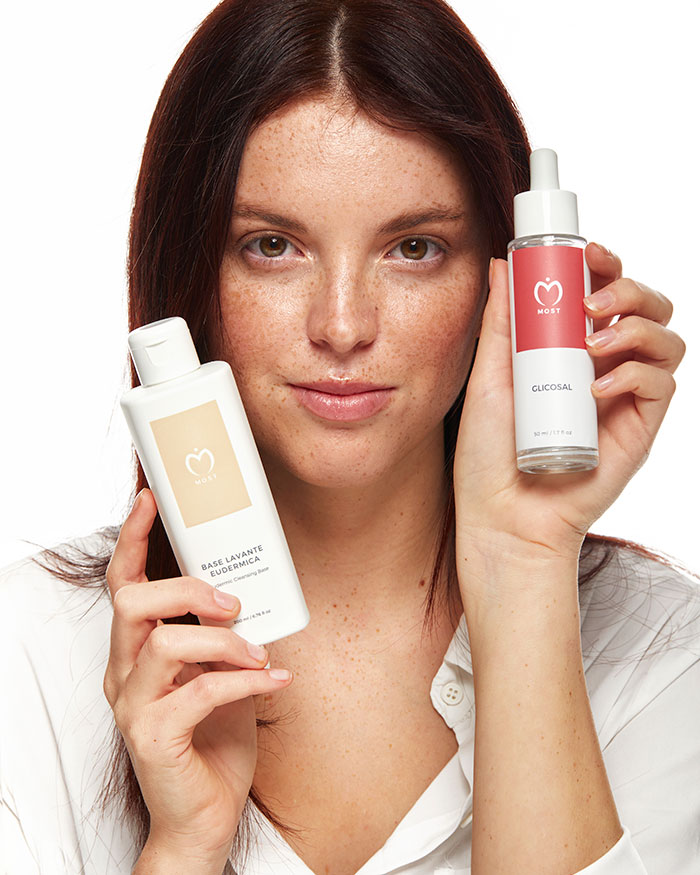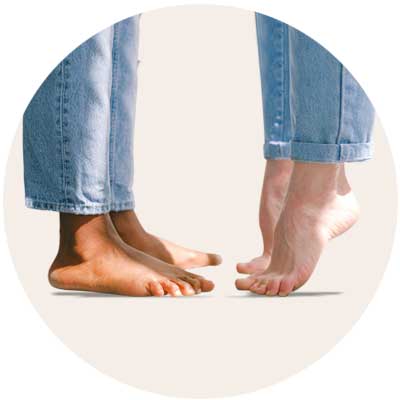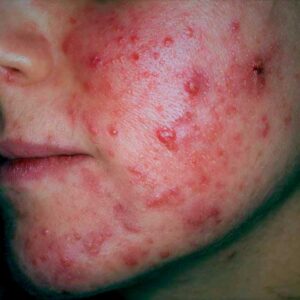
Acne: symptoms, causes and treatment
Acne is an inflammatory disorder of the pilosebaceous follicles of the face and trunk and is very common. It may occur in young people, during puberty, and is defined as polymorphous due to the simultaneous presence of blackheads, papules and pimples on the face, or later in adulthood, in which case it is defined as late acne. In general, acne begins with the formation of a comedone or blackhead. The blackhead develops by obstructing the outlet of the follicles or pores in the skin. This is followed by an inflammatory phase with red papules that can become pimples, usually developing on the cheeks and chin.
What are the stages of Acne?
There are three stages in acne development, characterised respectively by the presence of the following symptoms:
- Comedones (closed and open blackheads)
- Papules (inflamed areas)
- Pustules (pimples with a white or yellow dot).
Depending on the prevailing symptoms, different terms can be used to define acne. For example, we talk of acne comedonica, when comedones are the main symptom, or cystic acne when cysts prevail.
What are the main causes of Acne?
Juvenile acne sufferers are more sensitive to the stimulus of hormones.
In general, the causes that can give rise to acne include:
- Familiarity (where one or both parents suffered from acne)
- Stress (acne can worsen in stressful situations).
- The use of heavy covering and occlusive cosmetics.
Foods have no involvement in the onset or worsening of acne. Many scientific studies have investigated the potential of certain foods, mainly those rich in sugar and fat, to trigger or aggravate acne, but none have demonstrated a causal relationship.
What should be done in the event of Acne?
To deal with acne, it is essential to consult your dermatologist to find the treatment best suited to your needs. One of the supporting methods that can be considered is Micropeeling, which promotes microscopic exfoliation of the skin. This process helps to constantly renew the stratum corneum, the outer, more superficial layer of the skin. Micropeeling is mainly aimed at keeping the outlets of hair follicles clear, thus preventing obstruction that can lead to the development of comedones.
Micropeeling treatment
- In the evening, apply Glicosal Lotion, moistening a cotton make-up remover pad with about ten drops and then gently wiping it all over the face or body areas to be treated (sometimes acne can also affect other parts of the body such as the trunk).
The product should not be rinsed off and should be left overnight. During the night, the skin rests and the lotion takes effect undisturbed, thus achieving optimal results. Results can be seen after about two months of continuous treatment. Blackheads become detached, cysts superficialise, open up and then disappear, pustules dry out.

To wash or remove make-up from the face without feeling ‘tautness’ during treatment, the use of Eudermic Cleansing Base, a gentle, non-foaming product that does not dry out the skin, is recommended.
As make-up, we recommend Argillina Color mineral foundation which does not penetrate the skin, is breathable and does not inhibit the effect of micropeeling.
If, during treatment, dry skin appears, apply a small quantity of Extreme Emollient Ointment every morning to any affected area and massage well.
Moisturising creams and cream make-up products are not recommended. As they penetrate the pores, they tend to occlude the skin, inhibiting the exfoliating action of the lotion and making the whole treatment ineffective.


















